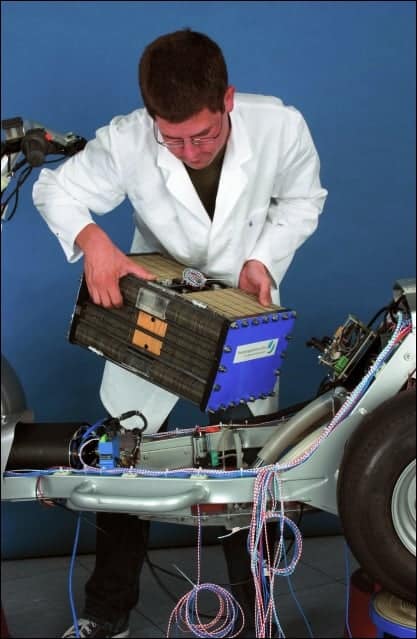Oak Ridge National Laboratory in the US and the Jülich Research Centre in Germany have signed an agreement to jointly develop fuel cells, which are widely perceived as one of the most promising green energy sources. The collaboration hopes to develop lower-cost, higher-performance fuel cells for cars and portable electronic devices.

Fuel cells are typically made up of an anode and a cathode, separated by a membrane that conducts protons but not electrons. When a fuel, such as hydrogen, is supplied to the anode, it is broken into its constituent protons and electrons. The protons are attracted to the cathode, while the electrons – unable to travel through the membrane – are harnessed in an adjacent circuit to produce electrical energy.
Fuel-cell technologies could bring important environmental benefits because they are much cleaner than traditional sources of power such as internal combustion engines. At worst, fuel cells release small amounts of carbon dioxide, but often the only by-product is water.
In this agreement, physicists at Oak Ridge National Laboratory (ORNL), which is owned by the US Department of Energy, will use their skills in the imaging of solids and surfaces to develop metal and carbon bipolar plates for the anodes and cathodes. Jülich researchers will share their materials and fabrication techniques.
The researchers will concentrate on two types of fuel cells: proton-exchange membrane fuel cells (PEMFCs) and direct-methanol fuel cells (DMFCs), both of which are already used to some extent commercially. Because of their relatively high output, PEMFCs are primarily being developed for the automotive industry. DMFCs can currently only produce small amounts of power, albeit over a long period of time, which makes them better suited to portable devices such as mobile phones, digital cameras or laptops.
“This agreement underscores the Department of Energy’s commitment to the [US] president’s hydrogen fuel initiative,” said Tim Armstrong, the manager of ORNL’s fuel cells program.



